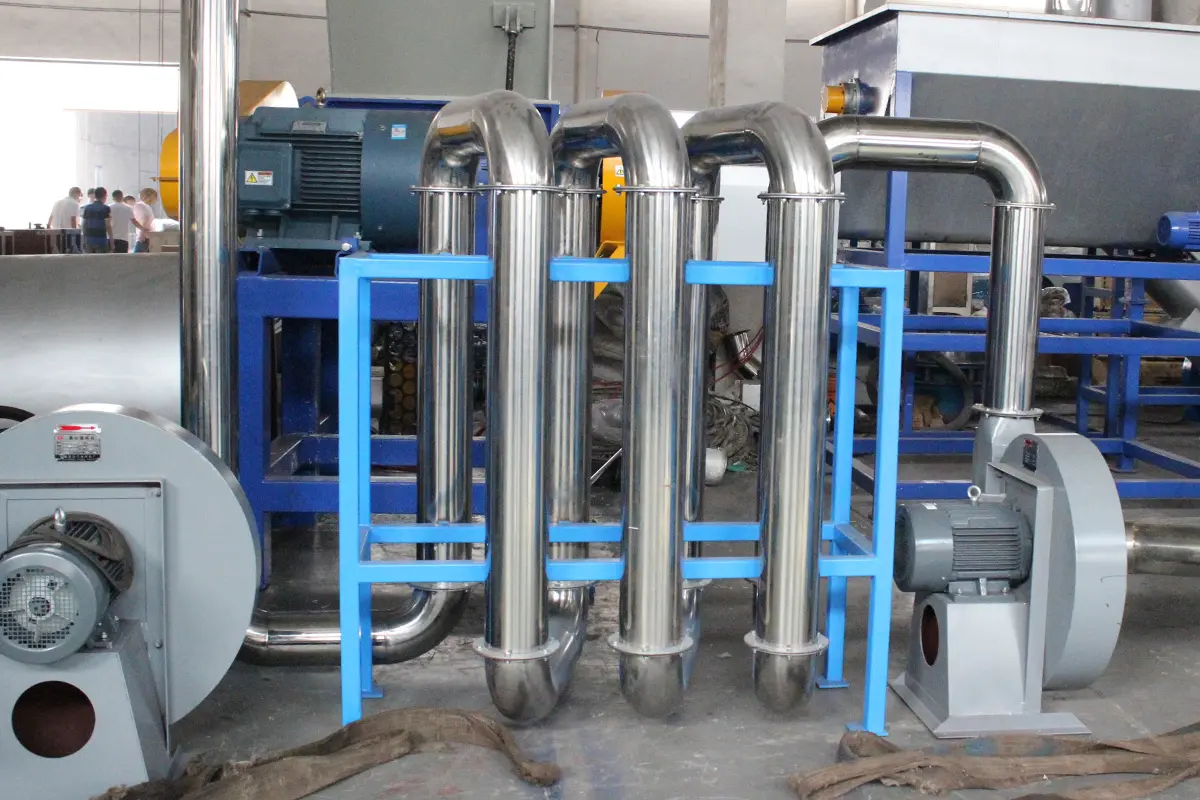Looking to maximize the value and consistency of your recycled plastic? Thermal drying machines are a critical step for any professional plastic recycling line. This ultimate guide explains how thermal dryers work, why moisture removal matters, industry types, practical selection tips, and trends to help you choose the best solution for your facility.
What is a Thermal Dryer for Plastic Recycling?
After washing and mechanical dewatering, plastic flakes and film still contain 5–15% moisture—too high for most downstream processing. A dedicated thermal dryer for plastic recycling uses hot air to quickly reduce moisture to below 3%, making your output suitable for high-grade pelletizing or direct sale.
Why Does Proper Drying Matter?
- Product Quality: Excess moisture creates bubbles and weak points in pellets, affecting performance and appearance.
- Stable Processing: Wet plastic increases downtime, causes jams, and leads to inconsistent results in extrusion or molding.
- Market Value: Low-moisture, clean flakes are valued higher by buyers and open doors to more demanding applications.
How Do Thermal Drying Machines Work?
A modern plastic drying system typically operates as follows:
- تغذية المواد: Washed, dewatered plastic enters stainless steel pipelines that evenly distribute the material.
- Hot Air Treatment: Powerful blowers push heated air through the pipes, evaporating both surface and embedded moisture.
- الفصل والتطهير: The airstream passes through a cyclone or filter to remove dust and fines, collecting only clean, dry plastic output.
Types of Thermal Dryers
- Pipeline Hot Air Dryers: Efficient for rigid flakes and films, modular and compact.
- Rotary Drum Dryers: Ideal for soft plastics and film, providing uniform drying via tumbling.
- Continuous Belt Dryers: Used for fragile materials or specialty applications where gentle handling is key.
Each type has unique strengths for different plastic types, capacity, and line configurations.
How to Select the Right Thermal Dryer
- التوافق المادي: Ensure the dryer handles your main plastics—PET, HDPE, LDPE, PP, etc.
- سعة: Choose a size to match your current and future throughput (kg/hr).
- Target Moisture: Some applications require <1% for best results—ask about achievable levels.
- كفاءة الطاقة: Prioritize heat recovery, insulation, and variable-speed fans for lower running costs.
- Ease of Integration: Select modular systems for easier upgrades and maintenance.
Trends & Innovations
- Smart Control: Modern dryers offer real-time monitoring of moisture, airflow, and temperature for better quality and efficiency.
- Advanced Separation: Improved cyclone technology removes more dust and light impurities, raising product quality.
- Energy Optimization: New models focus on reduced consumption and better heat management for greener operation.
How is a thermal dryer different from a dewatering machine?
What types of plastic can be thermally dried?
How do I choose the right dryer size?
Can a thermal dryer be retrofitted to existing lines?
Want to Learn More or Explore Solutions?
Discover how a thermal dryer for plastic recycling can boost your quality, throughput, and profits. Visit Energycle’s resource center for in-depth technical guides and expert advice.



